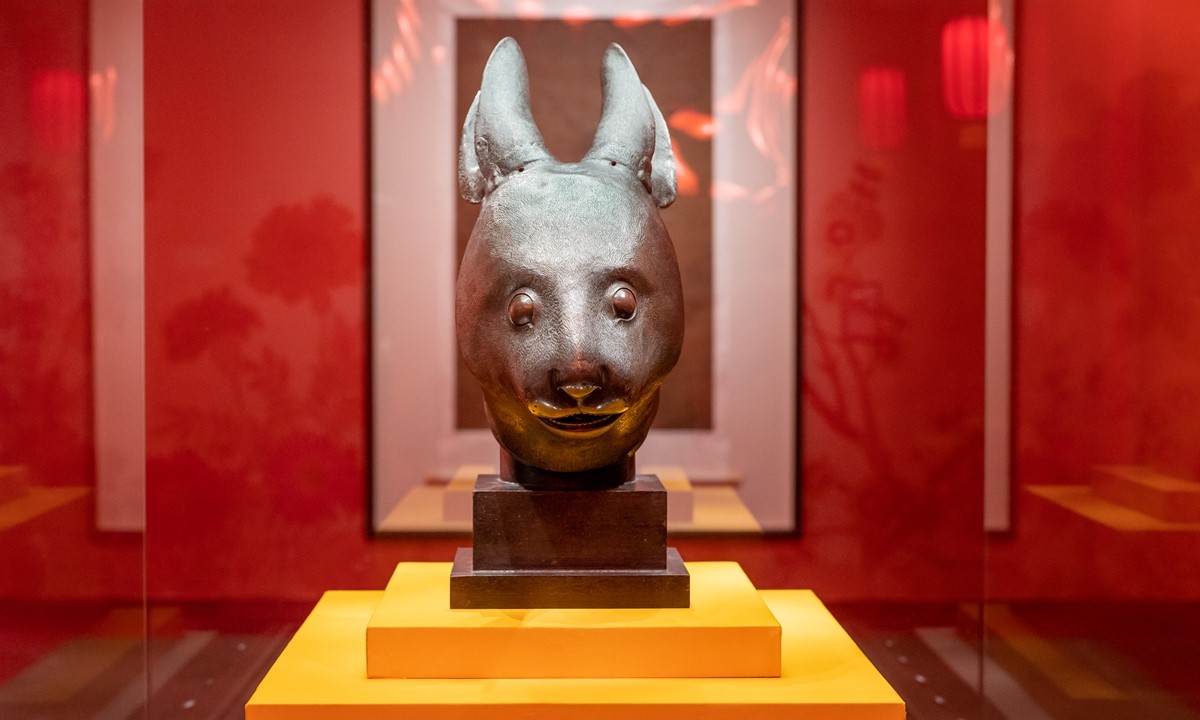20 Artefacts That Reveal The Secrets Of Beijing’s National Museum

Curious about the artefacts that tell the story of Beijing’s rich history? The National Museum of China holds a treasure trove of items that reveal secrets from ancient dynasties to modern times. From intricate jade carvings to ancient scrolls, each piece offers a glimpse into the past. Imagine standing before a 2,000-year-old bronze vessel or admiring a delicate porcelain vase from the Ming Dynasty. These artefacts not only showcase artistic skill but also provide insight into the culture and daily life of different eras. Ready to uncover the stories behind these fascinating items? Let’s dive into the wonders of Beijing’s National Museum.
Ancient Treasures of Beijing’s National Museum
Beijing’s National Museum holds a vast collection of artefacts that span thousands of years. Each piece tells a story, offering a glimpse into China's rich history and culture. Here are some must-see treasures.
Simuwu Ding
This massive bronze vessel from the Shang Dynasty is the largest of its kind ever discovered. It was used for ritual sacrifices to honor ancestors.Jade Burial Suit of Liu Sheng
Crafted from over 2,000 pieces of jade, this suit was designed to protect the body of Prince Liu Sheng in the afterlife. It’s a stunning example of ancient Chinese craftsmanship.Terracotta Warriors
Though replicas, these figures represent the army that guarded the tomb of China’s first emperor, Qin Shi Huang. Each warrior has unique facial features and expressions.
Artifacts from the Han Dynasty
The Han Dynasty marked a golden age in Chinese history. The artefacts from this period reflect advancements in technology, art, and culture.
Flying Horse of Gansu
This bronze statue depicts a horse galloping on one leg, symbolizing speed and power. It’s an iconic piece from the Eastern Han Dynasty.Changxin Palace Lamp
A bronze lamp in the shape of a kneeling servant girl, designed to minimize smoke. It showcases the ingenuity of Han Dynasty artisans.Silk Road Treasures
Items like silk garments, pottery, and coins highlight the trade and cultural exchanges along the Silk Road during the Han Dynasty.
Buddhist Relics and Statues
Buddhism has played a significant role in Chinese history. The museum’s collection of Buddhist relics and statues offers insight into this spiritual tradition.
Yungang Grottoes Statues
These intricate stone carvings from the Northern Wei Dynasty depict various Buddhas and bodhisattvas, showcasing the spread of Buddhism in China.Dunhuang Manuscripts
Ancient texts and paintings from the Dunhuang Caves, which served as a major Buddhist center. They provide valuable information about religious practices and daily life.Gilded Bronze Buddha
A stunning statue from the Tang Dynasty, representing the height of Buddhist art in China. The intricate details and serene expression are mesmerizing.
Imperial Artifacts from the Ming and Qing Dynasties
The Ming and Qing Dynasties were periods of great prosperity and cultural development. The museum’s collection includes many artefacts from these eras.
Ming Dynasty Porcelain
Known for its blue and white designs, Ming porcelain is highly prized. The museum’s collection includes exquisite vases, plates, and bowls.Qing Dynasty Robes
Elaborate silk robes worn by emperors and nobles. The intricate embroidery and vibrant colors reflect the opulence of the Qing court.Imperial Seals
Used by emperors to mark official documents, these jade seals are symbols of authority and power. Each seal is intricately carved with dragons and other motifs.
Modern History and Revolutionary Artifacts
The museum also houses artefacts from more recent history, including the revolutionary period and the founding of the People’s Republic of China.
May Fourth Movement Posters
Propaganda posters from the early 20th century, advocating for political and social reforms. They capture the spirit of a pivotal moment in Chinese history.Mao Zedong’s Desk
The desk used by Chairman Mao during the early years of the People’s Republic. It’s a tangible link to one of China’s most influential leaders.Red Army Uniforms
Worn by soldiers during the Long March and the Chinese Civil War. These uniforms symbolize the struggle and sacrifice of the revolutionary period.
Cultural and Artistic Masterpieces
The museum’s collection also includes many cultural and artistic masterpieces that highlight China’s rich heritage.
Calligraphy by Wang Xizhi
Considered the greatest calligrapher in Chinese history, Wang Xizhi’s works are revered for their fluidity and elegance. The museum holds several of his pieces.Paintings by Zhang Daqian
A master of traditional Chinese painting, Zhang Daqian’s works blend classical techniques with modern influences. His landscapes and portraits are breathtaking.Bronze Mirrors
Beautifully decorated mirrors from various dynasties, showcasing the artistry and craftsmanship of ancient Chinese metalworkers.
Ethnic Minority Artifacts
China is home to many ethnic minorities, each with its own unique culture and traditions. The museum’s collection includes artefacts from these diverse groups.
Tibetan Thangka Paintings
Intricate religious paintings on cloth, used in Tibetan Buddhist rituals. They depict deities, mandalas, and scenes from Buddhist scriptures.Miao Silver Headdresses
Elaborate silver headdresses worn by Miao women during festivals and ceremonies. They are stunning examples of traditional Miao craftsmanship.
Discovering Beijing’s Rich History
Beijing’s National Museum offers a deep dive into China's rich history. Each artefact tells a unique story, from ancient dynasties to modern times. The Jade Burial Suit showcases ancient burial customs, while the Bronze Ding pot highlights early craftsmanship. The Han Dynasty Stone Reliefs depict daily life and beliefs of that era. The Tang Dynasty Tri-colored Glazed Pottery reveals artistic advancements. Ming Dynasty Porcelain reflects trade and cultural exchange. These artefacts, among others, provide a window into the past, helping visitors understand the evolution of Chinese civilization. Exploring this museum is like walking through a timeline of history, offering insights into the culture, art, and innovations that have shaped China. Whether you're a history buff or just curious, the National Museum of China is a must-visit to truly appreciate Beijing’s historical depth.

